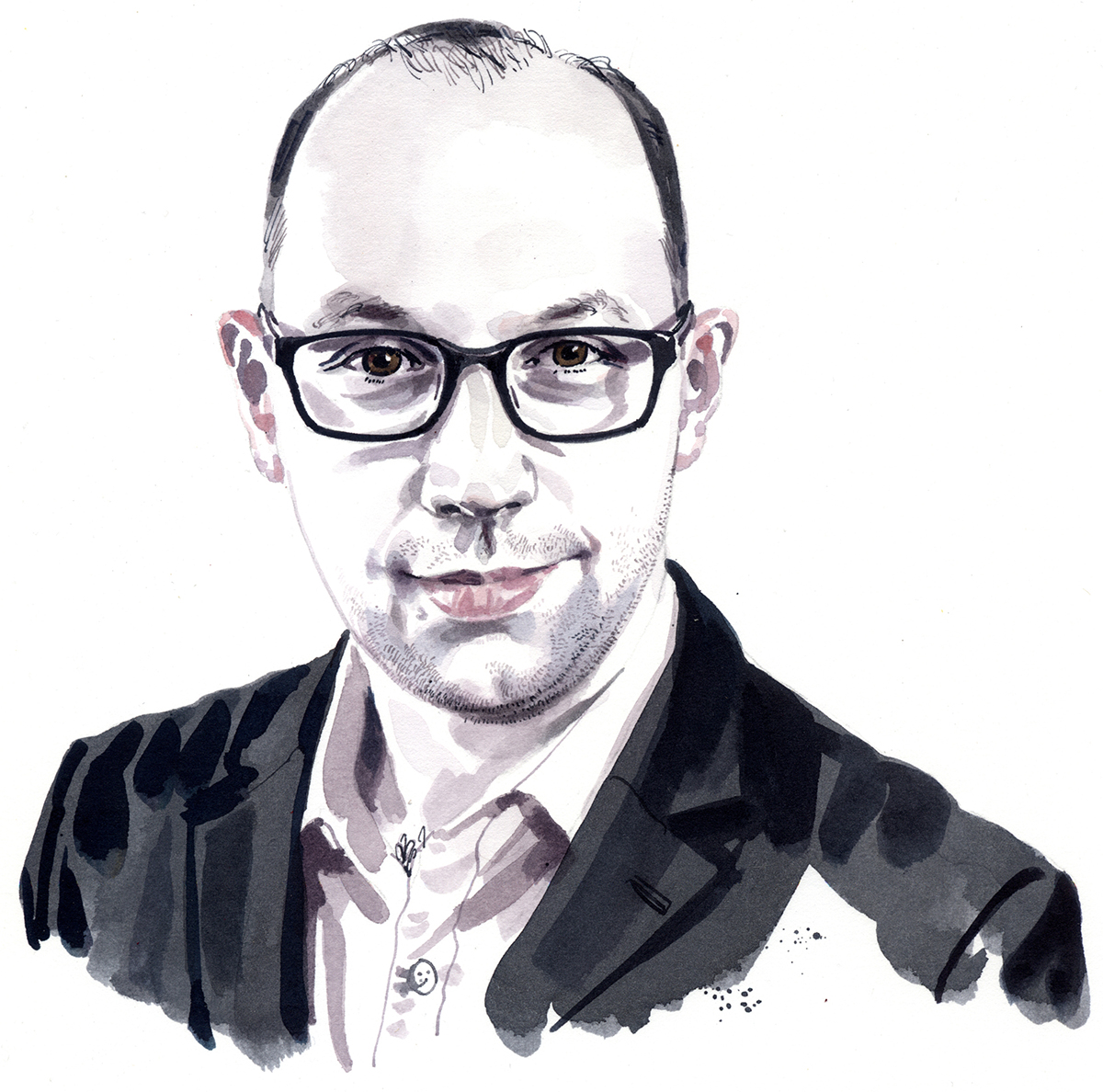Collin Yoxall’s Research Helps Advertisers Account for Social Media Fatigue
Platforms enable two-way conversations between brands and consumers, but users may be ignoring advertisements in their feeds.

Illustration by Matthew Cook
Collin Yoxall’s Research Helps Advertisers Account for Social Media Fatigue
Platforms enable two-way conversations between brands and consumers, but users may be ignoring advertisements in their feeds.
Spending two-plus hours a day on a single activity is enough to make anyone feel burned out.
Yet the average person, as of 2018, was spending two hours, 16 minutes per day perusing social media networks. Endless scrolling of feeds has led to a phenomenon known as social media fatigue, one of the unfolding consequences of living a quasi-online existence.
For his strategic communication master’s thesis, Collin Yoxall ’13 (MS ’20) studied what — if anything — advertisers know about this 21st-century type of fatigue and how it might alter their distribution of paid content in digital spaces such as Facebook and Twitter.
Massive social networks offer free accounts to their 2.65 billion users, but the networks are highly profitable corporations that derive up to 90 percent of their revenue from paid advertisements.
“Interactivity is very important for advertisers,” said Eunseon “Penny” Kwon, an assistant professor of strategic communication who sat on Yoxall’s advisory committee. “Social media enables two-way, even multiple-way communication between consumers and brands.”
When it works correctly, that is.
Owners of social media companies have built empires by learning how to blend posts of baby photos with ads targeted to a user’s interests, Yoxall said. “Facebook has gotten so good at being able to see your interests and match that up with their advertisements.”
Impact of Social Media User Data Mining
Cracks opened in that skilled monetization after the Cambridge Analytica scandal in 2018, which revealed how social media companies permitted mass harvesting of user data. Social media users, and Congress, demanded Facebook executives come clean about the extent of their digital surveillance tactics. In turn, the tech giant began setting limits on how well advertisers could get to know potential customers.
Brands became subject to restrictions on social platforms. Audience engagement declined. Advertising dollars spent on the big networks started to level off.
“Do they not cognitively see that ad? Or do they see it, and they just don’t care?”
Collin Yoxall
Privacy concerns aside, some communication scholars began theorizing that social media denizens were growing exhausted with the endless streams of information, perhaps even ignoring the paid content altogether.
Social Media Fatigue
Part of Yoxall’s research was to judge how tired social media users are of their news feeds, and then to estimate how the fatigue affects their perceptions of online advertising. He recruited more than 200 people to take a survey on Amazon’s MTurk platform. Modestly compensated volunteers self-reported levels of social media fatigue and then responded to different varieties of advertisements. He hoped to shed light on what types of advertisements resonated with people who lacked enthusiasm for paid content. He wanted to know: “Do they not cognitively see that ad? Or do they see it, and they just don’t care?”
For the other half of his thesis research, Yoxall interviewed a handful of advertising professionals to gauge whether they were aware of social media fatigue, and if so, how they planned to shift strategies.
The questions underlying his thesis were intended to inform advertisers’ course corrections, he said: “Do they have to change the content? Do they have to do more text? Do they have to do more photo, more video?”
Advertisers “need to make something that’s authentic and real and not dressed up. And they need to make it relevant.”
Collin Yoxall
Yoxall, who majored in political science as an undergraduate, found that in general ad pros were cognizant of user burnout. In response, they were turning away from gimmicky social tricks and returning to genuine, unadorned messaging.
To compensate for social media fatigue, Yoxall said, advertisers “need to make something that’s authentic and real and not dressed up. And they need to make it relevant. They need to be able to tell a good story in a unique way.”
Yoxall had a post-graduation job lined up with a North Texas communications company, but the economic fallout from the COVID-19 pandemic altered those plans. He is seeking a professional role in public relations, not advertising. PR is a different animal from its consumer-mindset cousin and is less reliant, in general, on social media messaging, he said.
But, Yoxall said, his thesis research process was helpful. In addition to gaining fluency in reporting on hard data, “It’s definitely made me more aware of the importance and primacy of getting people to pay attention and to have a good story.”

Your comments are welcome
Comments
Related reading:
Features, Research + Discovery
Whitney Roach Seeks Ways to Make Schools More Inclusive for Queer Students
In K-12 schools, the researcher found little support for non-heteronormative students and families.
Features, Research + Discovery
Kristof Pota Manipulates Metals to Treat Alzheimer’s
The chemist also uses metals to better the contrast agent for MRIs.